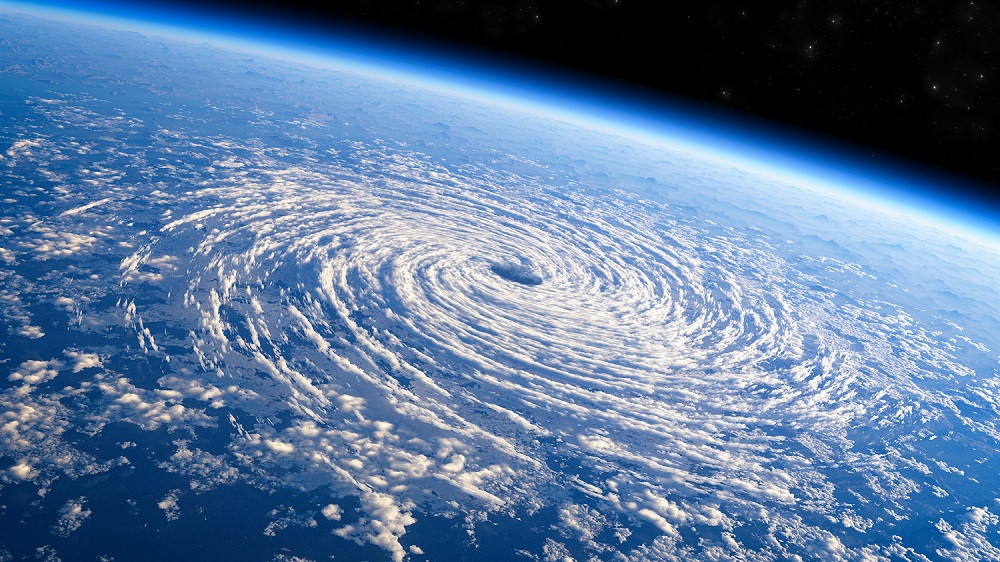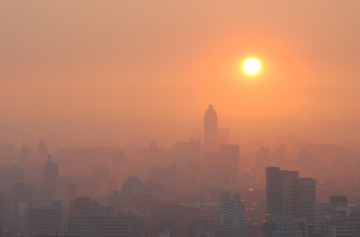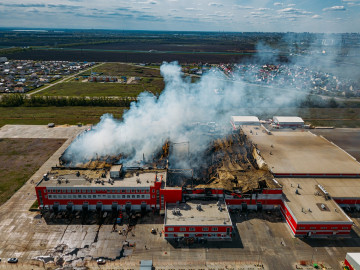Wildfire smoke and hurricane damage have been in the news frequently over the past few years. These two major natural disasters have caused hundreds of millions of dollars in damage to businesses, structures, and natural resources.
In fact, more than 3,000 homes were destroyed by wildfires in 2023, and more than $4 Billion of damage was caused by hurricanes in the same year. While the single events themselves are incredibly destructive in the areas they affect, both natural disasters have widespread indirect impacts across the United States.
In our webinar entitled “Forecasting the Fury: Safeguarding Businesses from Hurricane and Wildland Fires,” our team of meteorologists, Marshall Stageberg, Commercial Technology Practice Lead at Antea Group USA, Clorece Hammitt, Head of Health & Safety Dashboarding, and Michaela Ericksen, Staff Professional, discuss the complexities and far-reaching implications of these forces, why it is crucial for proactive preparedness, and what some effective mitigation strategies could be. They also delve into the technological advancements that have revolutionized the forecasting of both natural disasters.
If you missed it, check out the full webinar on-demand below.
Watch On-DemandForecasting Hurricanes: Past to Present
Hurricanes form and spend a lot of their life cycle over the ocean, so it used to be very difficult to predict them, let alone detect them. Historically, there was no warning or forecasting for hurricanes. People would have as much warning as their eyes could see, and that’s it.
However, with the introduction of satellites, the ability to see and predict tropical weather has drastically improved. Starting with the first meteorological satellite TIROS in 1960, then the Nimbus satellites in the late 60's to the late 70's, and now the GOES satellites, satellites imagery, and sensors have been invaluable tools in the topical weather forecasting toolkit. Now, it’s possible to get more accurate predictions up to a week in advance.
Hurricane Trends: Are There More Than Ever?
Overall, trends in recent years reflect an increase in the number of total hurricanes and the number of major hurricanes per year. Also, the percentage of hurricanes that are considered major (category 3 or above) has increased by nearly 10% since the 1990s, and those are the storms with the highest potential for widespread damage to both people and property.
Hurricanes are very sensitive to the sea surface temperature, and since the overall temperature has been rising since the 1900s, some of this increase in hurricane activity can be explained by that. But, it’s important to keep in mind that just like satellite imagery improving, much of the technology used for measuring things like wind speed, pressure, and temperature have become much more reliable and precise.
So, even with the increase in hurricane activity and intensity, forecasters’ ability to both detect and properly categorize hurricanes has improved, so this increase is to be expected.
Hurricanes and Their Damage
Hurricanes are notorious for causing substantial and long-lasting damage, with estimates indicating a staggering $742.1 billion in damages from 2017 to 2021, averaging $148.4 billion per year.
The primary driver of this destruction is flooding, which occurs due to two main factors. First, hurricanes are large and can move slowly, holding massive amounts of moisture from the open water they traverse, leading to widespread rainfall of 2-16 inches or more. Second, the process of hurricanes drawing heat and energy from the water creates a significant buildup of water beneath the storm, resulting in massive waves known as storm surges. These surges can reach heights of 5, 10, or even 15 feet, posing a significant threat to coastal regions.
To aid in forecasting storm surge risk, meteorological research has developed a tool called the Potential Storm Surge Flooding Map, which factors in variables such as elevation, land use, and tides to determine the potential impact on coastal areas.
Forecasting Wildland Fires and Smoke Exposure
Similarly to hurricanes, wildland fires don’t have to be next to your home or business to impact you. Fires also have widespread impacts beyond where they are burning. Smoke, and other particulates such as dust, can travel thousands of miles before descending. Smoke mainly consists of water vapor, soot, and debris, and fine particles make up approximately 90% of the total particle mass.
Even with increased media coverage, wildfire frequency hasn’t increased on average over the last 30+ years. But, the fire intensity has increased significantly over that same time period, with the average number of millions of acres that has burned increasing.
Smoke from these fires has become more prolific due to increasing fire intensities.
How can you Predict if you’ll be Impacted by Smoke?
First, the Hot Dry Windy Index (HDW) uses weather to gauge the potential for wildfire intensity changes. It helps track conditions to see how difficult or easy a particular day’s weather will make safely fighting fires. The index is formulated to account for meteorological conditions both at the Earth’s surface and in a 500-meter layer just above the surface.
Second, the Hybrid Single-Particle Lagrangian Integrated Trajectory (HYSPLIT) model is a computer model that can model where air in the atmosphere is coming from and where it is going. This is helpful for tracking where wildfire smoke will spread to, and subsequently, any pollution or particulate matter that will come with it.
So, by using things such as the HDW and HYSPLIT modeling, it’s easier to understand potential air quality by combining fire weather behavior modeling with air trajectory modeling for locations potentially impacted by smoke.
What can you do to Prepare?
With hurricanes, it’s important to know what facilities, assets, or personnel you have in areas that have frequent storms, including inland, not just in coastal areas. Storms like these can impact a wide area of the country that isn’t even in the storm’s direct path. On top of that, your Emergency Response Plan, which in certain circumstances is required by OSHA, should incorporate hurricane preparedness.
For wildland fires, it’s also important to take stock of what facilities, assets, and personnel are in fire-prone areas, whether that’s locally, nationally, or internationally. Next, have a wildfire response plan if you are in an area that is fire-prone. Always be prepared for fire events and communicate that plan to your personnel.
Tell your employees about potential storms and fires, especially if they could be impacted by them. You and your employees can check websites like weather.gov or airnow.gov to learn about watches, warnings, and air quality alerts in your area of business. They can change quickly, so you must be vigilant.
What can you do if you Were Impacted?
For hurricanes, ensure your buildings are safe before entering. Never enter a building with integrity or structural issues, as the liability skyrockets. It’s also important to remove standing water and moisture immediately, as it can lead to mold, mosquitoes, and disease. Finally, it’s also important to test and sample the air for mold spores so your employees aren’t breathing in bad air.
Speaking of air quality, if there is a wildland fire near your business, remember your business’s indoor air quality may be suffering. Always review your HVAC procedures. If you don’t change out the filters regularly, it will ruin the air quality for your employees and overwork your HVAC system. Put procedures in place to change filters more frequently if there is a lot of wildfire smoke around your business.
It’s also a good idea to invest in an Indoor Air Quality (IAQ) Monitor to track the air quality your personnel are experiencing indoors. If air quality is bad outside, the air quality could be bad inside, too. A monitor can tell you if you need to change out HVAC filters or do more for the air quality inside of your business.
Key Takeaways
In summary, both hurricanes and wildfires have been in the news frequently in recent years, and they have caused hundreds of millions of dollars in damage to businesses, structures, and natural resources. While the immediate destruction is significant, the indirect impacts extend across the United States. That means that even if your business isn’t close to a storm or fire, you can still see these indirect impacts.
Advancements in forecasting technology have enhanced the ability to predict hurricanes up to a week in advance, but trends indicate an increase in the frequency and intensity of hurricanes. Similarly, wildfire smoke can travel long distances, affecting areas far from the fire site. Preparing for these disasters involves understanding risks, communicating with employees, and monitoring air quality and building structure integrity to safeguard businesses and personnel.
Do you need help forecasting or preparing for storms or fires? Then, reach out to our EHS Data and Knowledge Management team today!
Want more news and insights like this?
Sign up for our monthly e-newsletter, The New Leaf. Our goal is to keep you updated, educated, and even a bit entertained as it relates to all things EHS and sustainability.
Have any questions?
Contact us to discuss your environment, health, safety, and sustainability needs today.







